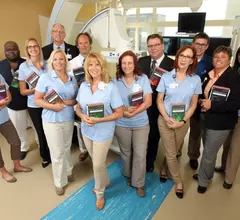The placard project at Spectrum Health Systems is a unique methodology developed by George Vallillee, manager of Radiology Information Solutions, to improve the fidelity of the patient experience during a planned downtime or system disruption. The project was proposed and initiated by Vallillee, and largely driven by teams whose input was mainly intellectual collateral, drawn from daily workflows, and drawn from the radiology system used throughout Spectrum. Since the rollout of the program, it has been tested and updated regularly to make further improvements in efficiency. Deemed a success by health system executives, the placard program has become a permanent part of Spectrum Health Systems communication plan.









